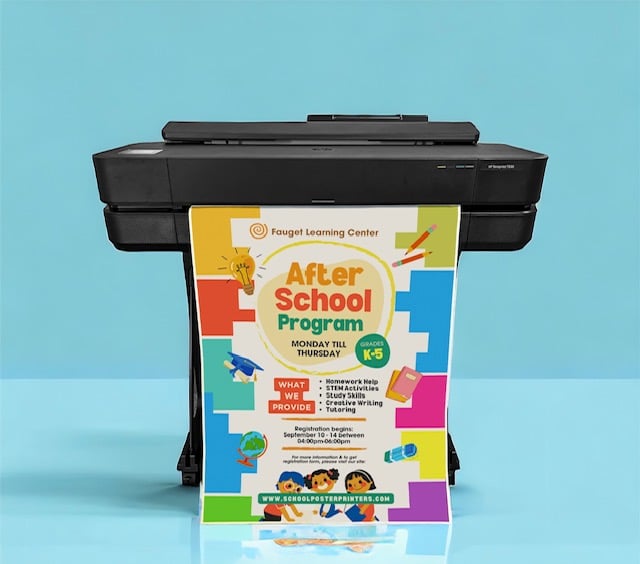
DISCOUNTED EDUCATION PRICING! CALL 1-877-891-8411. We Gladly Accept School Purchase Orders!

In today’s fast-paced, visually-driven world, traditional methods of education are being reimagined. One of the most dynamic tools gaining traction in schools today is infographics. These visual representations of information are transforming how students engage with content, process complex ideas, and retain knowledge. But how exactly do infographics help in education? Let’s dive into the many benefits they bring to the classroom.
At their core, infographics combine visual elements—such as charts, icons, and images—with text to represent data, concepts, or ideas. They’re designed to simplify complex information, making it easy to understand at a glance. In education, infographics help break down overwhelming topics into bite-sized, digestible chunks.
But why should schools care about infographics? Let’s break it down:
Absolutely. One of the biggest challenges in education is keeping students engaged. Traditional textbooks and lengthy lectures can sometimes feel monotonous. Infographics, however, stand out as a visual tool that grabs students’ attention. Infographics use color, images, and simplified text to convey important information, making learning feel more interactive and exciting. This leads to more active participation and curiosity among students.
You can see this in action on platforms like Canva, which offers customizable templates for creating visually appealing learning materials.
Yes, infographics are perfect for breaking down intricate ideas into manageable pieces. Whether it’s a detailed scientific process, historical timeline, or mathematical equation, an infographic can illustrate it clearly.
Imagine trying to explain the process of photosynthesis—a concept that involves several steps. By using an infographic with arrows, color-coded stages, and concise labels, the process becomes far easier to understand.
Consider using tools like Piktochart to create infographics that simplify these challenging concepts.
Definitely. Research shows that humans retain information better when it is presented visually. Infographics use images, colors, and patterns that help anchor information in long-term memory. Whether it’s a historical event or a scientific principle, students are more likely to remember the material when it’s conveyed in a visual format.
For instance, a well-crafted infographic summarizing a chapter from a textbook or a historical event can be more memorable than reading a paragraph of dense text.
Creating an infographic isn’t just about absorbing information—it’s also about organizing and presenting it in a meaningful way. When students design their own infographics, they are actively engaged in the learning process. This fosters critical thinking as they decide what information is most important and how to present it clearly.
By using tools like Venngage, students can explore their creative potential while also improving their problem-solving skills.
How can infographics bring history to life? Infographics are excellent for summarizing events, comparing historical periods, and visualizing key figures. Imagine a timeline infographic that highlights the major events of World War II, or a diagram comparing the governments of ancient Greece and Rome. These visuals help students process information in a structured and clear manner.
Complex processes like the human digestive system or the water cycle are often difficult to grasp. Infographics break these processes into visual, step-by-step guides, making it easier for students to understand. A well-designed infographic on photosynthesis, for example, can show the relationship between sunlight, water, and carbon dioxide in a way that words alone cannot.
Infographics are also valuable in mathematics. For example, a chart comparing different types of geometric shapes, or a color-coded illustration of formulas and equations, can be incredibly helpful. A visual representation of Pythagoras’ theorem or the order of operations helps students internalize these concepts more effectively.
Language arts lessons often revolve around grammar, literature, and writing skills. Infographics can break down grammar rules (like sentence structure or punctuation) into digestible visual pieces. For a novel, an infographic can summarize themes, characters, and key plot points in a quick visual format, which helps students better understand and engage with the text.
Infographics are more accessible than ever, thanks to a variety of online tools. Here’s how educators and students can easily create their own infographics:
These tools provide a wealth of templates and icons that can help students create infographics without needing to be design experts.
Absolutely! Infographics can serve as assessments themselves. Teachers can ask students to create an infographic as part of an assignment, allowing them to demonstrate their understanding of a topic. This approach not only tests their knowledge but also their ability to synthesize information and present it clearly.
For example, a history teacher could assign students the task of creating an infographic about a specific historical event, with a focus on key facts, dates, and figures. This way, students have to research the event, analyze the information, and then present it in a creative, digestible format.
While the benefits are clear, there are some challenges to consider:
The future of education is increasingly visual, and infographics are at the forefront of this transformation. They help students engage with material in a more dynamic way, simplifying complex concepts and encouraging critical thinking. With the rise of digital tools, creating and using infographics in the classroom has never been easier.
As educators, we have a responsibility to leverage these tools to create a more interactive and impactful learning experience. So, the next time you sit down to teach or study, consider integrating infographics into your lesson plans and assignments—you might just be amazed at how much more effective and enjoyable learning can be!
For more insights on the role of visual learning in education, check out this article on visual learning techniques.